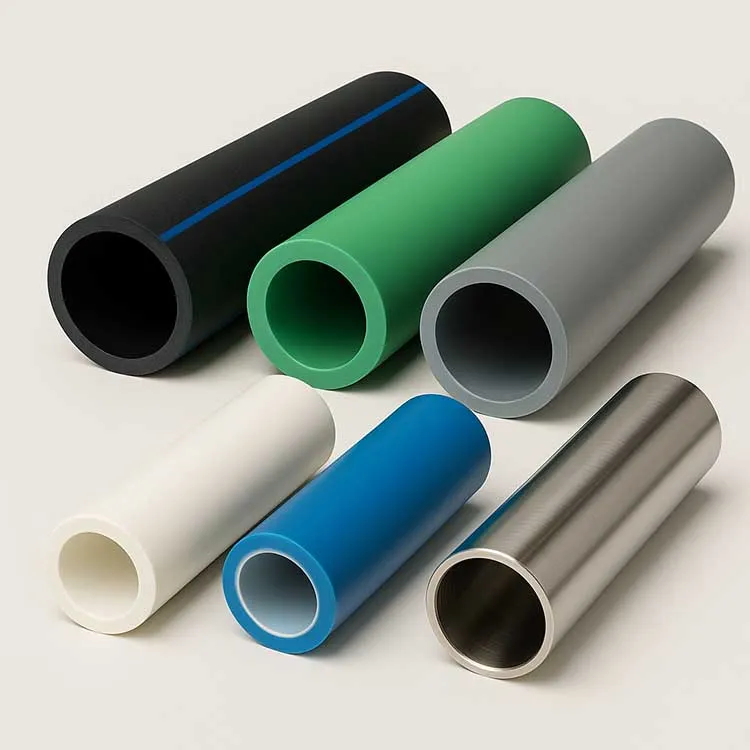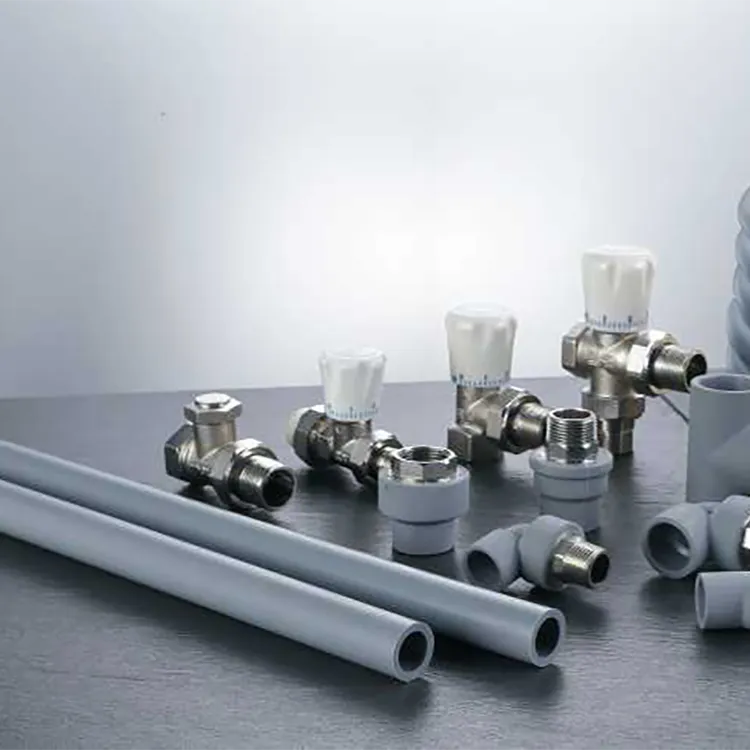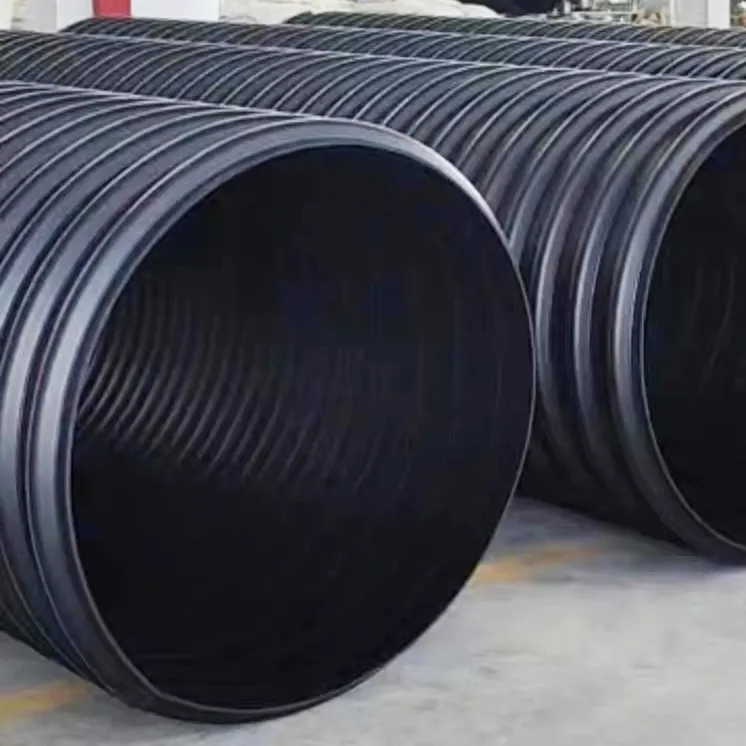Parameters:
Diameter Range: HDPE double-wall corrugated pipes are available in a wide range of diameters, typically ranging from 75mm to 1200mm. The selection of the appropriate diameter depends on the specific application and project requirements.
Wall Structure: The pipes consist of an outer corrugated wall and an inner smooth wall. The corrugated structure provides strength, flexibility, and improved load-bearing capacity, while the smooth inner wall ensures efficient fluid flow.
Length: Standard lenths of HDPE double-wall corrugated pipes typically range from 6 to 12 meters. Custom lengths can also be produced to meet specific project needs.
HDPE Double Wall Corrugated Pipe plays an important role in drainage systems
HDPE Double Wall Corrugated Pipe plays an important role in drainage systems, and its design and characteristics make it ideal for drainage applications. The following are the main applications and effects of HDPE double-wall corrugated pipes in drainage:
Drainage capacity: HDPE double-wall corrugated pipe has a large inner diameter and smooth inner surface, which can provide excellent drainage capacity. Its corrugated construction adds strength and rigidity to the pipe, allowing it to withstand high volumes of liquid flow and quickly drain water out of the system.
Corrosion resistance: HDPE material has excellent corrosion resistance, and has good resistance to chemicals and acid and alkali in soil. This enables HDPE double-wall corrugated pipes to operate stably for a long time in environments that come into contact with waste water and sewage, reducing damage to pipes and the need for repairs.
Sealing performance: HDPE double-wall corrugated pipe has good sealing performance, which can effectively prevent the leakage of water and sewage. Its special corrugated structure provides a reliable connection and is able to resist factors such as external pressure and ground subsidence, ensuring the integrity and stability of the drainage system.
Lightweight and flexible: HDPE double-wall corrugated pipe is lighter and more flexible than traditional drainage pipes, which is convenient for transportation, installation and adjustment. Its bendability and high toughness make it easier to apply in different terrains and complex layouts, reducing the difficulty and cost of construction.
Durability and long life: HDPE material has excellent anti-aging and durability, and can withstand the test of long-term use and harsh environments. The long life and stability of HDPE double wall bellows reduces the need for maintenance and replacement, saving time and money.
HDPE double wall corrugated pipe has excellent performance and effect in drainage system. It has strong drainage capacity, good corrosion resistance, high sealing performance, and has the advantages of light weight, flexibility, durability and long life. The use of HDPE double-wall corrugated pipes can ensure efficient and reliable drainage systems to meet various drainage needs.
What do HDPE double-wall corrugated pipes S1 and S2 refer to and how to distinguish them?
"The 4th grade and the 8th grade are the points of good quality and poor quality.", "s1 is the sn4 ring with a rigidity of 4 kN per square meter / s2 is the sn8 ring with the rigidity of 8 kN per square meter. There is no difference in appearance, just There is a difference in thickness and volume, eight is thicker than four!". Are these two methods correct or not?
Both of the above statements are not entirely correct. The 4th grade is represented by S1, that is, SN1 represents the 4th grade of ring stiffness, and the 8th grade is represented by S2, that is, SN2 represents the 8th grade of ring stiffness. And S1=SN4, S2=SN8. Formula expression: S1=4KN/㎡, S2=8KN/㎡, the difference in ring stiffness, in simple terms, refers to the difference in the compressive capacity of the pipeline.
S1 and S2 HDPE double-wall corrugated pipes are excellent in drainage. This can be accurately selected according to the specific use environment. If you don't know how to choose a double-wall corrugated pipe for drainage, you can contact our experts for consultation.
What are the remedies for HDPE double-wall corrugated pipes?
Heat shrinkable tape bonding 2. Cement mortar fixing 3. Huff joint 4. Plastic adhesive 5. Welding PE material

How to clean the pipe end of HDPE double wall corrugated pipe
1. First, use a fine file to trim the burrs on the metal pipe ends of the HDPE double-wall corrugated pipe, and simply repair the frizz at the pipe ends.
2. Carry out further cleaning work, using cotton wool and brush to clean up oil, water, and metal chips in the pipe end and thread of HDPE double-wall corrugated pipe.
3. The HDPE double-wall corrugated pipe must use a special reamer to chamfer 1/2 of the thickness of the plastic lining layer, and the chamfer slope should be 10°-15°.
4. The HDPE double-wall corrugated pipe should be chamfered with a sharpening knife, which can play a protective role.
After the cleaning of the above steps, the sealing effect will be better and the drainage will be smoother when welding the double-wall corrugated pipe.
Production Process:
HDPE double-wall corrugated pipes are manufactured through a specialized extrusion process. The key steps involved in their production include:
Material Preparation: High-quality HDPE resin is selected, and additives such as antioxidants and UV stabilizers are incorporated to enhance the pipes' performance and durability.
Extrusion: The HDPE resin is melted and fed into an extruder, where it undergoes extrusion and is formed into the desired pipe shape with the corrugated exterior and smooth interior walls.
Cooling and Forming: The extruded pipe is cooled using water or air to achieve the required shape and dimensions.
Quality Control: Rigorous quality control measures, including testing for dimensional accuracy, hydraulic performance, and material properties, ensure that the pipes meet industry standards and specifications.
What should be paid attention to when installing PE double-wall corrugated pipe?
1. The socket should be in the direction of the water flow and socket should be in the direction of the water flow.
2. The adjusted pipe should be vertical and flat after being broken.
3. During the interface operation, the inner and outer work of the socket and socket should be cleaned up first, and the rubber ring should be checked whether the matching is complete.
4. The central axis of the socket must be aligned with the central axis of the socket.
This can prevent the seal from being leaked when draining, causing water leakage and bulging pipes. Double-wall corrugated pipes are one of the best drainage pipes. Pay attention to the specifications during construction to reduce the incidence of accidents.

Is the rubber ring of different ring rigidity of HDPE double-wall corrugated pipe universal? How many and where to install the rubber ring?
Not universal, the number of rubber rings installed is 2.
Position: DN200---DN300 is 1-2 turns, DN400---DN800 is 1-3 turns

What kind of connection method should be adopted between double-wall corrugated pipes and inspection wells?
A flexible connection should be used, or socket pipe fittings can be used for the connection. If the requirements are not high, it can be directly built into the inspection well wall

Transportation Considerations:
When transporting HDPE double-wall corrugated pipes, the following considerations should be kept in mind:
Proper Handling: Pipes should be handled with care to avoid damage or deformation during loading, unloading, and transit.
Secure Packaging: Pipes should be securely packaged and stacked to prevent shifting or movement during transportation, minimizing the risk of damage.
Appropriate Transport Vehicles: Suitable vehicles, equipped with adequate support and restraining mechanisms, should be used to transport the pipes safely.
Storage:
Proper storage is essential to maintain the quality and integrity of HDPE double-wall corrugated pipes:
Storage Environment: Pipes should be stored in a clean, dry, and well-ventilated area, away from direct sunlight, extreme temperatures, and sources of heat.
Proper Stacking: Pipes should be stored in a horizontal position, with adequate support to prevent deformation or sagging.
Protection from Impact: Pipes should be protected from impact, contact with sharp objects, and heavy loads to prevent damage.
Rotation: To maintain product quality, pipes should be rotated regularly to ensure even distribution ofstress and prevent any potential flattening or warping.
Conclusion:
HDPE double-wall corrugated pipes offer numerous advantages in terms of their parameters, applications, production process, transportation considerations, and proper storage methods. Their durable and flexible nature, coupled with excellent corrosion resistance, makes them an ideal choice for drainage systems, sewerage systems, culverts, cable ducting, and more. The extrusion process ensures consistent quality and dimensional accuracy, while proper handling, packaging, and transportation practices help maintain the integrity of the pipes during transit. Adequate storage measures protect the pipes from environmental factors and prevent any damage or deformations. Overall, HDPE double-wall corrugated pipes are a reliable solution for various construction and infrastructure projects, providing efficient and long-lasting performance.
To sum up, HDPE double-wall corrugated pipe has excellent function and effect in drainage system. They offer excellent corrosion resistance, high strength and durability, good sealing, and quick installation and maintenance. By using HDPE double wall corrugated pipe, a reliable, efficient and environmentally sustainable drainage system can be established.




981.webp)

 (1)379.webp)

294.webp)
476.webp)
420.webp)
146.webp)
460.webp)
287.webp)
274.webp)
688.webp)


